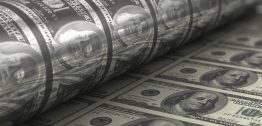A massive ramp-up in lending to questionable borrowers … fraudulent loan documentation … and accelerating defaults.
Does this ring a bell — the subprime mortgage loan disaster of 2007, perhaps? Not exactly, but you’re on the right track. That was the last debt bust.
Welcome to the new bust, this time in subprime auto loans.
Ten years after the second-worst financial crisis in American history, consumer lenders are at it again. But this time, they’re working overtime to finance a different part of the American dream, according to this eye-opening Bloomberg article.
It’s not the beautiful home this time around, but rather what sits gleaming in the sun parked outside in the driveway.

Subprime auto lending has been around for a while. But after the housing bust, and subsequently tighter mortgage loan standards, banks had to find other outlets for their questionable lending practices.
That has boosted subprime auto lending to a whole new level.
And just like the housing bust, risks aren’t just confined to bank balance sheets. They are spread far and wide, as auto loans are sliced and diced and packaged into subprime securities.
Securities that are sold to unsuspecting bond investors worldwide.
Yes, indeed history may not repeat exactly. But it sure does rhyme.

Consider that in 2009, total subprime auto-loan securities totaled just $2.5 billion. But only seven years later, at the end of 2016, Wall Street created and sold $26 billion in subprime auto bonds.
That’s a tenfold growth rate!
And there’s potential for much more growth. That’s because the overall market for auto financing is much larger, at $1.2 trillion.
But not surprisingly, this “growth industry” for banks and finance companies is already running into trouble …
Auto-loan fraud is approaching levels seen in mortgage lending during the housing bubble. Delinquencies are on the rise. Losses on subprime auto loans are on the rise too and may reach $6 billion this year. That’s double the loan-loss level in 2015.
Granted, the new debt crisis in subprime auto loans is not likely to reach the magnitude of the mortgage crisis in 2008. That’s because the auto lending market is just one-tenth the size of the market for home mortgages. But it’s bound to cause some distress among lenders.
Remember, during the subprime meltdown, just 10% of mortgages defaulted. But that caused the stock prices of many lenders to plunge 50%-90% in value … and several went belly-up.
And in the new subprime auto bust, the default rate could be much higher.
Why? Because it’s a lot easier for an underwater consumer to toss his or her keys to the repo man, than it is to walk away from their own home.
But what really worries me is the bigger picture …
Subprime auto loans are simply a sign of the times. It’s just the tip of the iceberg.

The reality, as you can see in the chart above, is that nothing has changed in the last decade since the financial crisis. The world is still drowning in debt.
As shown above, total corporate and business debt as a percent of GDP has climbed right back to a new record high, at 45% of GDP.
Not coincidentally, this is almost exactly the level of corporate debt-to-GDP reached just before the economy and stock market went bust the last two times … in 2000 and 2007.
So, watch out for the next big debt bust!
Good investing,
Mike Burnick



Ms Tan July 20, 2017
Thank you Mike for the clarification. I had few lending questions and found an idea here. But the most concerning point is the trouble of banks and other financial companies. Keep us update about the possible remedies of these issues.